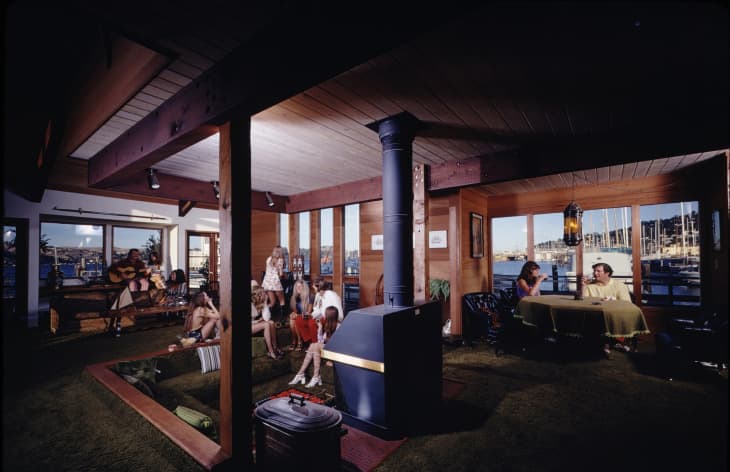The Rise and Fall of the Once Beloved Sunken Living Room

Let’s talk, for a moment, about a curious architectural feature of many mid-century homes: the sunken living room. For a while, it was all the rage to step down into your living space, until, all of a sudden, it wasn’t. To what do we owe the rise and fall of the sunken living room?
Both Realtor.com and Houzz trace the origin of the sunken living room to Kansas-born architect Bruce Goff, who in 1927 designed a house for his teacher, Adah Robinson. The home, which was built in the Art Deco style, had a feature that had never been seen before: a sunken conversation pit.
The conversation pit was featured in many of Goff’s other designs, and soon other architects were inspired. In 1958, Eero Saarinen and Alexander Girard included one in their design for Indiana’s Miller House — but this one was so large that it was almost as if an entire room had been sunk into the floor.
Saarinen’s 1962 design for the TWA Terminal at JFK airport included plenty of dramatic level changes, as well as a sunken seating area. The Dick Van Dyke Show, which first aired in 1961, featured a sunken living room as part of its set, as did the Mary Tyler Moore show, which debuted in 1970. The conversation pit had grown up into a full-blown space.
At the same time that all this was going on, there was another significant trend that affected the design of the American home — the rise of the ranch house. The ranch house, which rose to popularity in the post-war 1940s and dominated suburban neighborhoods for decades, had a long, low profile and an open floor plan. One way that architects found to create distinct living areas in a home with no walls was with a sunken living room. And dropping the living room a few feet below the home’s other spaces meant it could be taller and more spacious without affecting the roof line.
If you’ve ever been in a home with a sunken living room, it’s easy to see that they have a certain grandeur. (Architects have been using level changes to signal the importance of spaces for thousands of years, although the more important spaces are usually up, not down.) Sinking a seating area, or a whole room, gives it added height, but also, paradoxically, a more intimate feel.
So why did the sunken living room fall out of fashion? There is, of course, no real science to the kinds of features that people decide to build into their homes, but my guess is that sunken living rooms fell out of favor for the same reason waterbeds did: they were kind of a pain in the ass. I remember being told, in architecture school, that people tend to be careless on stairs that involve less than three steps. Those few steps up and down may look charming, and grand, but they’re also a huge tripping hazard. Many homeowners, when filling in those old sunken living rooms, cite safety as a main concern.
Personally, I love sunken living rooms for the same reason I love other weird, impractical home features, like sunken tubs: they look cool. When properly executed, a sunken living room can have a certain magic to it, both dramatic and intimate at the same time. While conversation pits are once again popping up more and more in modern interiors, there’s no saying whether full-blown sunken living rooms will stay niche or return to mainstream popularity. In the meantime, if you have one in your house, be sure to watch your step.